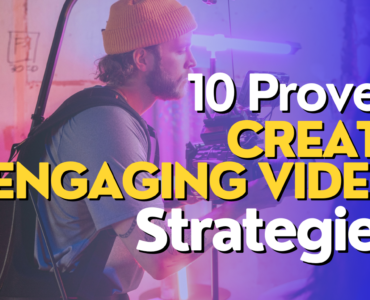How The Top eCommerce Web Design Tips Can Transform Your Sales
In today’s fast-paced eCommerce world, your website’s design is crucial to your success. A well-designed eCommerce site can significantly boost your sales by offering a seamless shopping experience, engaging users, and building trust with your customers. This guide will walk you through The Top eCommerce Web Design Tips that can help your online store stand out and thrive in a competitive market.
Table of Contents
ToggleWhy eCommerce Web Design Matters
Before we dive into the tips, it’s important to understand why eCommerce web design is so vital. Your website is often the first interaction a potential customer has with your brand, so it needs to make a lasting impression. Effective eCommerce design isn’t just about looking good—it’s about functionality, user experience, and optimizing for conversions.
1. First Impressions Matter
It only takes 50 milliseconds for visitors to form an opinion about your website. If your site doesn’t grab their attention right away, you risk losing them to a competitor. A well-designed homepage with clear navigation and an attractive layout is essential for making a positive first impression.
2. User Experience Drives Sales
A website that’s hard to navigate or slow to load will frustrate users, leading to higher bounce rates and fewer conversions. By focusing on user-friendly design, you can improve the shopping experience, encouraging customers to stay longer and make purchases.
3. Mobile Optimization Is Essential
With the rise in mobile shopping, having a mobile-optimized eCommerce site is a must. Google also favors mobile-friendly sites in its search rankings, making mobile optimization crucial for both user experience and SEO.
The Top eCommerce Web Design Tips to Boost Sales
Now that we know why design matters, let’s explore The Top eCommerce Web Design Tips that can help you transform your sales.
1. Keep It Clean and Simple
A cluttered website can overwhelm visitors and distract them from making a purchase. Instead, opt for a clean and simple layout that highlights your products and call-to-action buttons.
How to Create a Clean Layout:
- Use white space to make your content and products stand out.
- Stick to a consistent color scheme that reflects your brand.
- Limit the number of fonts and font sizes to maintain a cohesive look.
- Place essential elements like the shopping cart and search bar in easily accessible locations.
2. Optimize for Mobile Users
With over half of all eCommerce traffic coming from mobile devices, your website must be responsive and easy to navigate on smartphones and tablets.
Mobile Optimization Tips:
- Use a responsive design that adjusts to different screen sizes.
- Ensure buttons and links are large enough for easy tapping.
- Simplify the checkout process for mobile users by reducing steps and forms.
- Test your website on various mobile devices to ensure consistency.
3. Focus on User Experience (UX)
A positive user experience leads to higher customer satisfaction, increased loyalty, and more sales.
Key UX Tips:
- Navigation: Ensure your site is easy to navigate with a clear menu and intuitive product categories.
- Search: Implement a robust search feature with filters to help users find products quickly.
- Load Times: Speed up your site by compressing images, using a content delivery network (CDN), and optimizing code.
- Accessibility: Follow web accessibility guidelines to make your site usable for all, including those with disabilities.
4. Use High-Quality Images and Videos
Visual content is critical in eCommerce. High-quality images and videos help showcase your products, giving customers a better understanding of what they’re buying.
Best Practices for Visual Content:
- Product Images: Use high-resolution images with multiple angles and zoom functionality.
- Videos: Include product videos to demonstrate features and usage.
- Consistency: Keep your images and videos consistent in style and quality.
5. Implement Strong Call-to-Action (CTA)
A compelling CTA is key to driving conversions. Your CTA should be clear, concise, and encourage users to take the next step, like making a purchase or signing up for a newsletter.
Tips:
- Placement: Position CTA buttons prominently on product pages and in the header.
- Design: Use contrasting colors to make your CTA buttons stand out.
- Copy: Write persuasive, action-oriented copy like “Add to Cart” or “Buy Now.”
6. Simplify the Checkout Process
A complicated checkout process is a leading cause of cart abandonment. Make it easy for customers to complete their purchases.
Checkout Simplification Tips:
- Guest Checkout: Allow customers to checkout without creating an account.
- Autofill: Offer autofill options for shipping and billing information.
- Progress Indicators: Show customers where they are in the checkout process and how many steps remain.
- Payment Options: Provide a variety of payment methods to cater to different preferences.
7. Build Trust with Customer Reviews and Testimonials
Trust is crucial in online shopping. Displaying positive reviews and testimonials can build credibility and encourage more sales.
How to Use Social Proof:
- Customer Reviews: Show reviews and ratings on product pages.
- Testimonials: Feature testimonials from satisfied customers or industry experts.
- Trust Badges: Display security certifications and payment guarantees to reassure customers.
8. Enhance SEO with Keywords and Content
SEO is essential for driving organic traffic. By optimizing your site with relevant keywords, you can improve search rankings and attract more customers.
SEO Tips for eCommerce:
- Primary Keyword: Use your primary keyword, “The Top eCommerce Web Design Tips,” throughout your content.
- LSI Keywords: Incorporate related keywords naturally to enhance relevance.
- Content Marketing: Create valuable content like blog posts and guides to boost SEO and establish your brand as an authority.
- Internal Linking: Use internal links to guide users to related products or content, improving user experience and SEO.
9. Speed Up Your Website
Website speed affects both user experience and SEO. A slow site can lead to higher bounce rates and lower rankings.
Speed Optimization Tips:
- Image Compression: Compress images to reduce load times.
- Lazy Loading: Load images and videos only when users scroll down the page.
- Content Delivery Network (CDN): Use a CDN to reduce loading times.
- Minify Code: Minify CSS, JavaScript, and HTML to improve speed.
10. Stay Updated with eCommerce Design Trends
The eCommerce landscape is always evolving. Keeping up with the latest trends will help your site stay fresh and competitive.
Top Design Trends for 2024
- Minimalism: Clean layouts with ample white space and straightforward navigation.
- Dark Mode: An increasingly popular option that enhances certain design elements.
- Personalization: Tailored shopping experiences based on browsing history.
- Micro-Interactions: Subtle animations and interactions that improve user engagement.
Conclusion: Transform Your Sales with The Top eCommerce Web Design Tips
Implementing these Top eCommerce Web Design Tips can dramatically impact your online store’s success. From mobile optimization to enhancing user experience and staying current with design trends, these strategies will help you create a website that not only looks great but also drives sales.
Your eCommerce website reflects your brand. By prioritizing design, user experience, and SEO, you can build a site that resonates with your audience, earns their trust, and turns them into loyal customers.
By applying these tips, you’ll be well on your way to transforming your sales and achieving long-term success in the competitive world of eCommerce.
May these Questions in your mind:
eCommerce web design is crucial because your website is often the first interaction a potential customer has with your brand. A well-designed site creates a positive first impression, enhances user experience, and optimizes the shopping process, all of which contribute to higher sales and customer loyalty.
Key elements of a clean and simple layout include the use of white space to highlight content, a consistent color scheme that reflects your brand, a limited number of fonts, and strategically placed essential elements like the shopping cart and search bar.
Mobile optimization is vital because over half of all eCommerce traffic comes from mobile devices. A mobile-optimized site ensures a seamless shopping experience on smartphones and tablets, which leads to higher conversions and better search engine rankings.
High-quality images and videos are essential for showcasing products effectively. They provide customers with a clear view of the products, which helps them make informed purchasing decisions, ultimately leading to higher sales.
Simplifying the checkout process by offering guest checkout, using autofill options, providing progress indicators, and offering multiple payment methods reduces friction for customers. This makes it easier for them to complete their purchases, which decreases cart abandonment rates and increases sales.
More Post:
For Our Services:
Related Posts
Recent Posts
- Maximizing Dental Insurance Reimbursements: A Step-by-Step Guide
- How to Scale Your Dental Practice Without Sacrificing Patient Care
- 10 Proven Tactics to Keep Patients Returning to Your Dental Practice
- Practical Tips for Dentists to Overcome Marketing Stress
- Key Differences in ROI: Email Marketing vs. Copywriting
Recent Comments
Categories
- Advertising(2)
- Branding(3)
- Dental Marketing(4)
- email marketing(1)
- Marketing(7)
- Social Media(1)
- Videography(1)
- Web Design(1)
- Website traffiking(1)






Comments (6)
Tools For Creators
I am extremely inspired along with your writing skills and also with the format for your weblog. Is this a paid topic or did you customize it your self? Anyway keep up the excellent high quality writing, it is uncommon to look a nice weblog like this one nowadays. !
Financial Housekeeping
Consistent reliability delivered, professional integrity maintained. Trust earned loyalty given. Trustworthy service.
Laurence Bastone
We are looking for partnerships with other businesses for mutual promotion. Please contact us for more information!
Business Name: Sparkly Maid NYC Cleaning Services
Address: 447 Broadway 2nd floor #523, New York, NY 10013, United States
Phone Number: +1 646-585-3515
Website: https://sparklymaidnyc.com
Maryalice Kanoza
We pay $10 for a google review and We are looking for partnerships with other businesses for Google Review Exchange. Please contact us for more information!
Business Name: Sparkly Maid NYC Cleaning Services
Address: 447 Broadway 2nd floor #523, New York, NY 10013, United States
Phone Number: +1 646-585-3515
Website: https://sparklymaidnyc.com
Buy Google Reviews
We pay $10 for a google review and We are looking for partnerships with other businesses for Google Review Exchange. Please contact us for more information!
Business Name: Sparkly Maid NYC Cleaning Services
Address: 47 Broadway 2nd floor #523, New York, NY 10013, United States
Phone Number: +1 646-585-3515
Website: https://maps.app.goo.gl/u9iJ9RnactaMEEie8
binance referal code
Thanks for sharing. I read many of your blog posts, cool, your blog is very good. https://www.binance.com/sl/register?ref=I3OM7SCZ